-
Posts
3,697 -
Joined
-
Last visited
Content Type
Profiles
Forums
Gallery
Events
Articles
Posts posted by elverno
-
-
Very nice

-
As always, holding up the cheap coin collector's end here...
1814 1/24 Thaler, Hessen-Cassel
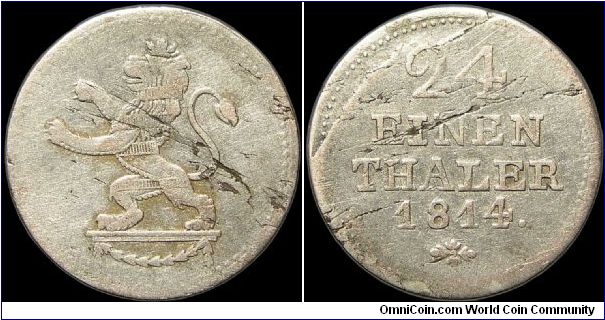
and another I collected a while back with extremely strong interior detail and almost smooth, yet porous rims.
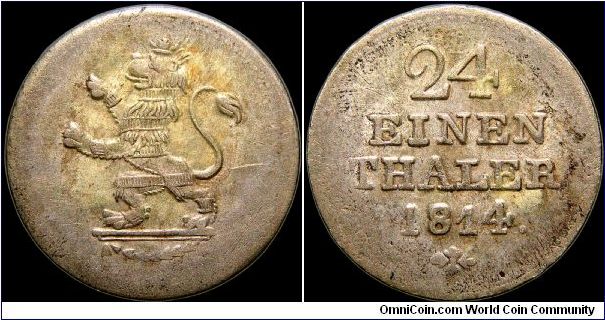
-
I love cheap copper!

1805 ¼ Skilling, Sweden.
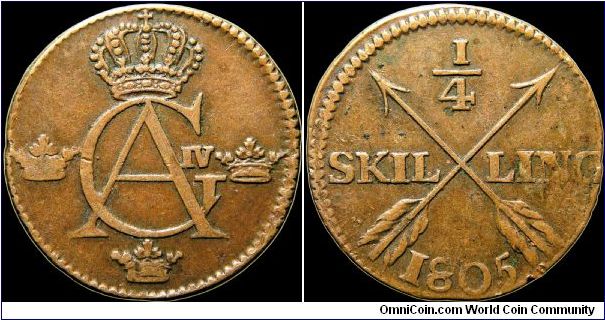
-
hehe... nice!
-
A $4 coin. Nothing special but I collect everything from 1789-1815 so I'm not really picky about condition if I don't own one yet...
1802 2 Skilling, Norway (as a Danish possession).
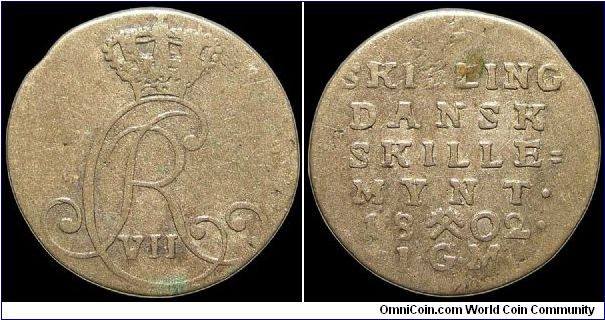
-
So... add me to the list?? I know how to show a lady a good time

-
1800 1 Pfenning, Salzburg.
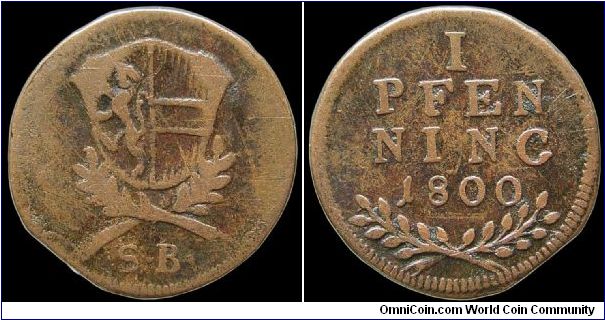
Not a great example but decent.
and
1805 Le Tombeau de Desaix, France.
Bramsen 426/427 (mule from two reverses)
d'Essling 1079
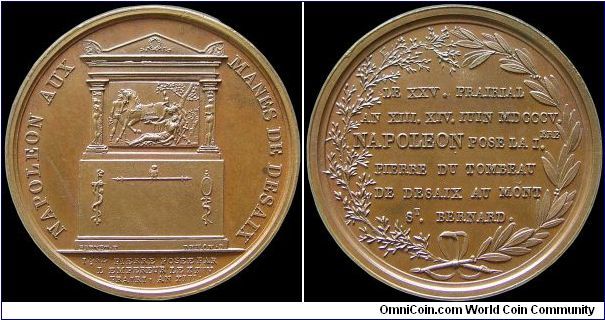
From the Long Beach show today.
-
From yesterday's Anaheim show. There was a stunning silver medal but way out of my price range...

1813 Presentation of Colours to the Royal Military College by Queen Charlotte.
Mudie XI
BHM - 769
Bramsen - 1246
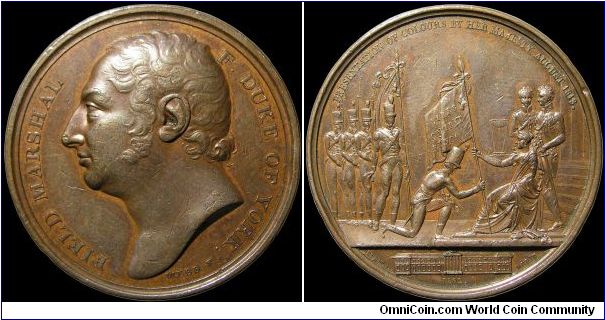
1790 Netherlands Gelderland - Holland
2 Stuivers
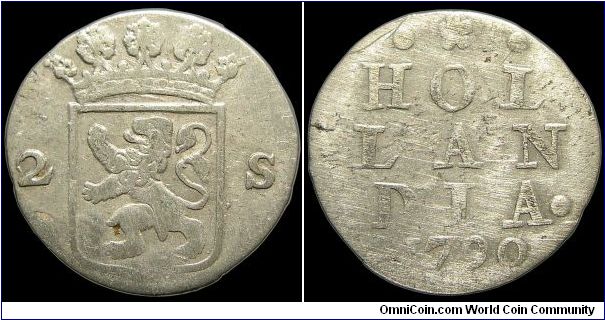
-
Probably will be my epitaph...
-
Here's my friend's reply, in part:
...thank you for your query - it's a VERY common medal and the 1830 date is somewhat deceptive.In its usual form, it is encased between two pieces of clear, convex plastic (or earlier ones may have had glass) and the whole is held together by a silver-gilt or gold (hallmarked) rim. The medal itself is usually (probably 99% of them) gold-plated base metal, although some of them are silver-gilt - hallmarks for silver (lion passant) will be evident either side of the square and compass on the reverse, although some claim hallmarks on the edge, but I have never seen these.
The medal, or 'jewel' when worn, is called the "Charity Jewel" (also sometimes colloquially known as the watchcase, Sussex or combined charities jewel) and was awarded for being a subscribing Festival Steward to two or more of the main Masonic charities (the Royal Masonic Institute for Girls, the Royal Masonic Institute for Boys or the Royal Masonic Benevolent Institution). Thus, the ribbon from which it is suspended is coloured in their appropriate colours - white for the RMIG, blue for the RMIB and red for the RMBI, or any combination thereof, depending on which charities the donor has supported. In 1985 the former two charities were merged into one, being the Masonic Trust for Girls and Boys, so I assume that this jewel is no longer issued, but they were issued in their tens, or even hundreds, of thousands over the years. On eBay, they seldom achieve more than USD 5-10.
The 1830 date is, as I said, misleading in that that was the year in which the award was instituted, although I am not sure if the same (above) qualifications were required initially. Certainly the precursors of the first two charities existed before 1830, being founded in 1788, 1798 and 1842, respectively. The same date was put on all the jewels, at least up to the late part of the 20th Century.
The obverse of the jewel is described as "A female figure of Charity, seated, her arms round a girl standing on her right with a bonnet hanging on her left arm and a boy who kneels at her left with a book under his left arm. Above, a triangle enclosing a heavily irradiated eye; below, in exergue: MDCCCXXX." It is 36 mm in diameter. It may be that the early ones were not enclosed by clear covers and were suspended 'bare' from a ribbon, utilising some sort of attachment device on the uppermost edge - I have not knowingly seen one from around the 1830 period, so cannot say.
It would seem that the originals, if one can say that in this case, are probably rare, but that it has been in use for a long time and therefore common in the restrikes (if you will). Hope this helps.

-
British Historical Medals lists it as BHM 1463. Rare in both silver and copper gilt. The only notation is "No specific reasons for the issues of this piece have been found." I'll ask my friend with a copy of Marvin's book on Masonic medals if there are any more details there.
-
I had a friend who possesses a copy of Marvin's book on Masonic medals to take a look at the first jeton and his partial response was:
Anyway, thanks for this picture - it's sort of listed in Marvin, in that the reverse is perfectly described, but the obverse is listed as depicting a helmeted Minerva. So I think Marvin missed this one, which is a variation of a previous jeton. Certainly, he did not catalogue the male portrait on the obverse of this one shown.I'm fairly certain that Louis XVI wasn't a Mason but I might be mistaken about that. His brother, the Duc d'Orleans was the Grand Master of France at the time of the Revolution.
-
Although not really a shooting medal this dates from 1804 from Zurich:
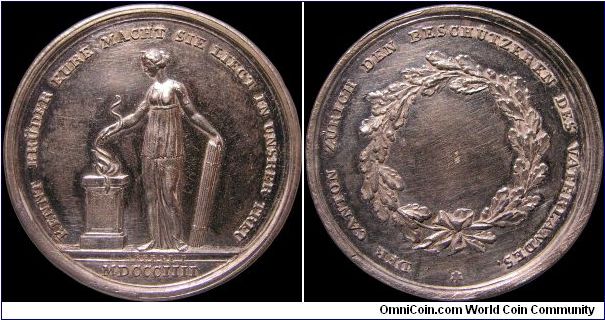
It's a protector's medal, issued to the local militia for service in defense of the country.
I'm not exactly sure when shooting medals started but they are one of the great temptations outside of the Napoleonic era for me. There have been hours at a Long Beach show where I just sit drooling over these things...
-
1796 - 25 Francs Mandat Territoriale
These were huge and were backed by confiscated church and emigre lands. Supposedly you could trade a pile of these in on some of that land and in fact rich people bought up property with these notes. For those who didn't have that much money they were just another form of assignat, rapidly depreciating until they were virtually worthless. If you look closely you can see this is a Series 1 note. They released hundreds of series with 50-100,000 notes in each series.
-
A nice haul today:
France 25 Francs Mandat territorial - 1796 paper money
France 1797 - Treaty of Campo Formio, scarce and nice in brass
Julich-Berg 1794 1/4 stuber - Fine
Julich-Berg 1805 3 stuber - Fine
Aachen 1793 4 heller - VG
All of these are tough to find so I'm pretty happy

-
I like Swiss coins

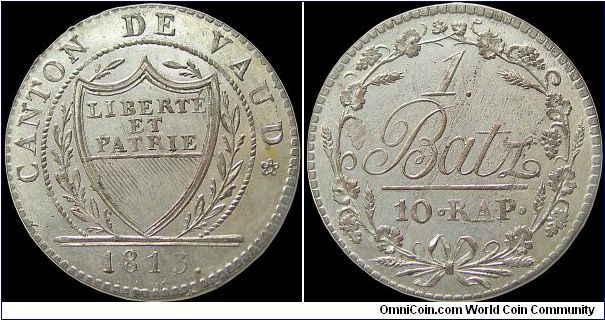
1813 1 Batzen, Canton of Vaud.
-
A 1798 1 Pfenig from Schwäbisch Hall and an 1811 King of Rome medal in silver (RRR!). Nice day...

-
That is just an amazing medal! Thanks for letting us see it

-
I got this:
1804 Distribution of the Eagles
Three days after his coronation Napoleon personally handed out the Eagles carried by his Army into battle. The medal is very common, this is my third. Sorry about the scans but my camera is in the shop.

-
I've seen your medals on Omnicoin elverno...
And I'm am amazed at the breadth of your collection Sir Sylvilagus! My medals certainly range from gem to junk, but the vast majority are from my period of interest and that makes them all fascinating to me...

-
Napoleonic and French Revolutionary period (1789-1815)
Coins, medals, tokens, jetons, paper money, ephemera and artifacts!

I branch outside those dates if the subject is someone who was a "player" during the period.
-
If you're an Oktoberfest fan then you need this token:


This is a marriage token issued for the nuptuals of Louis of Bavaria and Therese of Saxony in 1810. The three day celebration proved to be so popular that they were continued every year and became the origin of Oktoberfest.

-
Recognise Elverno from another forum!
 Glad to be here!
Glad to be here! -
Yeah, once you let those red arrows onto the dies they just collapse...

Actually the Kingdom had pretty primitive equipment and went through dies quickly. My example is listed as Pagani 18b; there's at least another five or six variants mentioned I think. I do know that one of the first things Joesph Napoleon did upon becoming king of the mainland part of the Two Sicilies was import some French expertise and minting equipment. Murat kept it up but I suspect they had French die-cutters and engravers because when the Bourbons came back in 1815 the quality slipped to the almost cartoonish coins prior to 1806.


1801 Unknown Medal
in Exonumia (Tokens, Medals, etc) Forums
Posted
I'm looking for help on this one. I picked it up for about $5 so I can't lose. I think the language is Danish but it could be Norwegian I suppose. I'm fairly certain it's not Swedish but I'll probably be wrong...
Obverse:
arbeidsom flittig. sparsom abdru. tro og god giver mennesket velsignelse og fornoieligt brod alle livets 18 dage. 01.
Reverse:
for gode handlingir og landet gavnlig flid af lieutenant h. v. buchvald
I know I've probably spelled a couple things wrong. There's at least 2 words with an o and 2 dots (umlaut?) and the ab of abdru is a conjoined letter. There are several letters that aren't as clear as you could hope. Any help as to its purpose and a translation however rough would be appreciated!